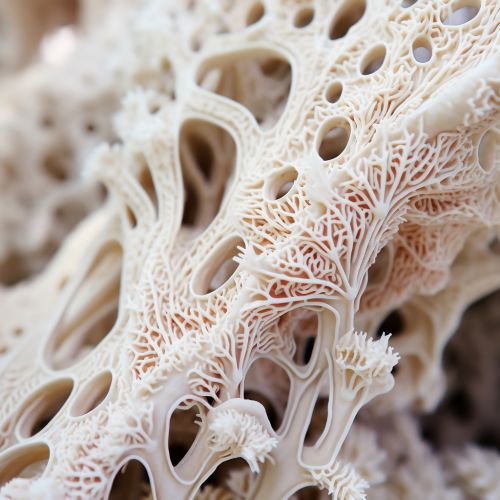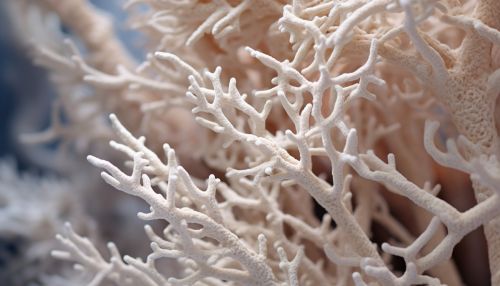Coral skeleton
Introduction
Coral skeletons are the hard, durable structures that house the soft bodies of individual coral polyps. These skeletons are composed primarily of calcium carbonate (CaCO3), a mineral substance that corals produce from the surrounding seawater. The structure and composition of coral skeletons provide essential insights into the biology, ecology, and evolution of corals, as well as the health of the world's coral reefs.
Composition
The primary component of coral skeletons is calcium carbonate, which is secreted by the coral polyps. This mineral substance forms the bulk of the skeleton and gives it its characteristic hardness and durability. In addition to calcium carbonate, coral skeletons also contain small amounts of other minerals, such as magnesium, strontium, and barium, which can provide valuable information about the environmental conditions in which the coral grew.
Structure
The structure of coral skeletons can vary widely depending on the species of coral. Some corals, such as those in the genus Acropora, have branching skeletons that form complex, three-dimensional structures. Others, such as those in the genus Porites, have massive, dome-shaped skeletons. Regardless of their shape, all coral skeletons are composed of a series of interconnected chambers, or corallites, each of which houses an individual coral polyp.
Formation
Coral skeletons are formed through a process known as biomineralization, in which living organisms produce minerals that become part of their structure. In corals, this process is facilitated by a group of specialized cells known as calicoblastic epithelium, which line the underside of the coral polyp. These cells extract calcium ions from the surrounding seawater and combine them with carbonate ions to form calcium carbonate, which is then deposited as the coral skeleton.
Growth
The growth of coral skeletons is a continuous process that occurs throughout the life of the coral. As new polyps are produced, they add to the skeleton, causing it to grow in size and complexity. The rate of skeletal growth can vary depending on a variety of factors, including the species of coral, the environmental conditions, and the availability of resources. In general, corals in nutrient-rich environments tend to grow faster than those in nutrient-poor environments.
Ecological Importance
Coral skeletons play a critical role in the ecology of coral reefs. They provide a physical structure that supports a diverse array of other organisms, including fish, invertebrates, and algae. In addition, the calcium carbonate in coral skeletons helps to buffer the acidity of the ocean, which is critical for the survival of many marine organisms.
Threats
Coral skeletons are under threat from a variety of sources. One of the most significant threats is ocean acidification, which is caused by the absorption of carbon dioxide by the ocean. This process reduces the availability of carbonate ions, making it more difficult for corals to produce calcium carbonate and form their skeletons. Other threats include physical damage from storms and human activities, as well as diseases and bleaching events, which can cause the coral polyps to die and the skeleton to degrade.
Conservation
Efforts to conserve coral skeletons focus on protecting the living corals that produce them. This includes reducing carbon dioxide emissions to mitigate ocean acidification, implementing protective measures to prevent physical damage, and monitoring coral health to detect and respond to disease outbreaks and bleaching events. In addition, scientists are researching ways to enhance the resilience of corals and help them adapt to changing environmental conditions.
See Also


